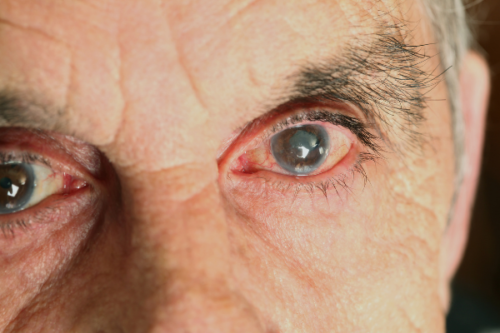Cataracts are an eye condition where a build-up of protein prevents light from reaching the back of the eye, creating cloudy patches and vision loss.
Vision will inevitably be misty and blurry as the eye’s lens becomes increasingly clouded. Depending on the lens, cataracts can affect the centre, sides or back of the lens, and they can appear in both eyes at different times.
Without treatment, there is a risk of eventual blindness.
The statistics speak for themselves, with cataracts being the leading cause of impaired vision worldwide. More than 12 million people in the world are blind due to cataracts. In the UK, around 2.5 million people over the age of 65 have, to various extents, some visual impairment with cataracts.
What are the causes of cataracts?
Most cataracts develop during older age. However, they can also appear after eye injuries and eye surgery. There is often a significant link between a lack of vitamins and childhood cataracts in poorer countries. Once again, without available healthcare, this can lead to blindness.
Several other causes of cataracts are:
• Family history of cataracts
• Regular and excessive alcohol intake
• Lifelong exposure to UV light
• Smoking
• Years of steroid medication
• Certain health conditions – e.g. diabetes
What are the symptoms of cataracts?
Though cataracts are not painful, nor do they make your eyes irritated, there are many symptoms, the most obvious being blurred or dim vision. Vision impaired by cataracts is like “looking through dirty glass”.
Colours can often seem faded, and people often see something of a ‘halo’ around bright lights, streetlights and car headlights. However, it is just as common to experience sensitivity to light where lights are too bright and dazzling.
Treatment and solutions for cataracts
Frequent eye tests are essential as your optician can detect any cataracts during your examination.
If the cataracts are mild and pose no threat, then stronger glasses may be the solution. Cataracts, however, tend to worsen, and usually, proper treatment is inevitable.
Surgery is effective, common and successfully performed in as little as 20 minutes. Under local anaesthetic, the cloudy lens is taken out and replaced with an artificial, clear lens that cannot cloud over. As a result, cataracts cannot grow back after surgery. Patients often go home the same day, with their vision beginning to return within a few hours.
If you have cataracts in both eyes you will have separate operations on different dates as this allows one eye to heal before operating on the other.
Watch our helpful video here explaining cataracts and their treatment
If you’re concerned about cataracts or would like to book an eye examination, please call us on 01628 663055.
For more information, see these helpful links and videos to cataracts:
References
1. Cataracts: our guide to causes, symptoms and surgery | Sightsavers
2. Cataract surgery | NHS
3. Age-related cataracts | NHS

